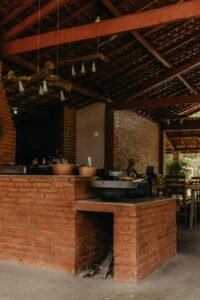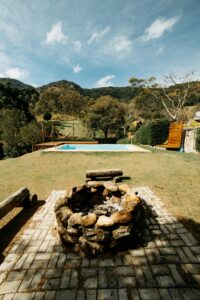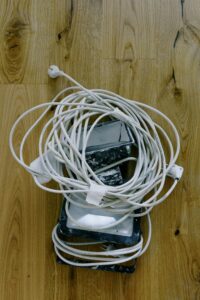Table of Contents
As a hunter, it can be a good idea to learn how rifle scopes work in general.
This is because knowing how they work can help you identify issues with the scope that may or may not arise later on.
Quick Summary
In this post, we will summarize all of the major components of rifle scopes as well as how they interact with each other to make the scope work.
Let’s get started.
A Rifle Scope on the Surface
When an average person looks at a rifle scope, they imagine a metal tube with glass lenses inside.
These lenses interact with light to give you a magnified image of your target so that you have an easier time shooting it with your rifle.
That being said, there’s a lot more than that going on inside a rifle scope as we’ll see in this post today.
For the purposes of this post, we will be looking at variable-power rifle scopes since they are more common.
Fixed-power scopes work in essentially the same way except that they have a horizontally adjustable erector system.
What Happens to Light When it Goes Inside a Rifle Scope?
Everyone knows that the images they see with their eyes are due to light being reflected off of objects.
Scopes utilize this light to enhance the image of whatever target you point the scope at.
Light reflects off of a target and goes in all directions. When you aim your rifle scope at that target, you essentially “capture” that light.
The components inside the scope perform a ton of highly technical adjustments in order to bring you an image that is clear and error-free.
For the purposes of this post, we have gone over each component inside a rifle scope that modifies the light entering the scope. We have done this in chronological order of when the light hits the rifle scope.
Let’s start:
Objective Lens
The objective lens is the lens on the rifle scope that is farthest from your eye and closest to the target.
The light enters the scope through the objective lens. Due to the distance between the target and your rifle scope, the image that enters the objective lens is upside down.
Note: If you want to know a complete guide and tutorials about scopes click HERE.
Objective lenses are typically coated in certain chemicals which refine the light by filtering certain wavelengths, reducing glare as well as numerous other functions.
These chemicals also help enhance the image in low-light and dark situations.
Once the light passes through the objective lens, it creates a focal point.
This first focal point is located at the same point where the reticle is located in “front-focal” rifle scopes.
This is highly important as we’ll find out later on in this post.
Erector System
The next component that the light hits are the erector system of the rifle scope.
Note: If you want to gain information on How to Dial in a Scope click HERE.
This system consists of two lenses that are utilized to flip the image back to its correct orientation.
This system is also the component that is responsible for the elevation adjustment of the reticle inside the scope.
Elevation adjustment refers to the changing of the position of the reticle either up or down.
When you turn the elevation adjustment turret (knob), a spring system inside the scope is activated which adjusts the image of the target.
In some rare instances with some rifle scopes, turning the knob may even change the physical position of the reticle itself.
Magnification by the Erector System
The magnification of the target image is also done by the erector system.
Moreover, the two lenses inside it move back and forth in unison along a track that is carved into an inner, secondary tube inside the scope.
These two lenses expand and contract, and the distance between them causes the image to be magnified.
This also causes the two lenses to create a second focal point and a second focal plane.
Important note: If you have a “second focal plane” or “rear-focal” rifle scope, then your reticle will not be magnified while the target image will be.
However, if you have a “first focal plane” or “front-focal” rifle scope, then your reticle will also be magnified along with the target image.
This is why you’ll notice that the reticle “grows” when you increase the magnification on a front-focal rifle scope.
The longer the inner tube is, the higher the rifle scope’s magnification capabilities can be.
This is why rifle scopes that have higher magnification settings tend to be larger than rifle scopes with lower magnification settings.
Note: If you want to know How to Paint a Rifle Scope click HERE.
Ocular Lenses/Eyepiece
Once the light passes through the erector system, it passes through two more lenses located in the ocular housing.
This housing is the part of the scope that is closest to your eye when you’re shooting.
The two lenses in the ocular housing are required to focus both the target image as well as the reticle to the shooter’s eye.
This third and final focal point that is created is known as the exit pupil or “eye box”. This is the point where your eye is supposed to be so that you can get a clear image of both the target as well as the reticle.
Depending on how precisely you have to position your eye to get a clear image in the scope, the exit pupil of a scope is termed either “forgiving” or “unforgiving”.
Note: If you want to gain information about Who Makes Redfield Scopes? click HERE.
On low-recoil rifles such as AR-15s, lower magnification scopes are used so that the exit pupil is shorter and closer to the lens.
On the other hand, on higher-caliber rifles, the exit pupil is relatively much longer. This is so that the shooter has some flexibility and can find the ideal position for their eye.
It’s also important for higher-caliber rifles to have scopes that have longer exit pupils because you don’t want the scope hitting you in the forehead from the gun’s recoil.
Wrapping Things Up…
So now you know how rifle scopes work.
We hope this post has been informative and also hope that this knowledge comes in handy to you down the line.
If you have any confusion or any questions you’d like to ask us regarding rifle scopes, please let us know in the comments below.
If you want to know more information about scopes click Here.
Author
-

John is the Editor in Chief here at The Outdoor Stores. His area of expertise ensures that there is no one better to suggest which rifles are most suitable for your hunting experience. He is also available for you to contact him personally to discuss the types of animals you want to hunt and the terrain you will be hunting on.
Feel free to read his posts for expert opinion on Rifles, Scopes, Rangefinders, Bonoculars and Monoculars.
View all posts






